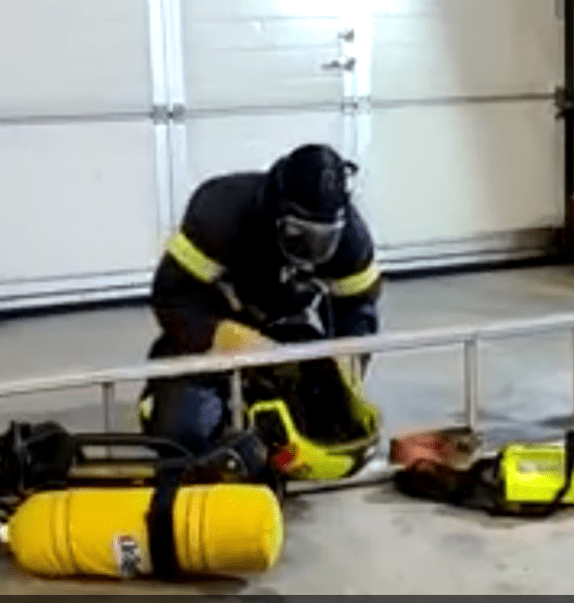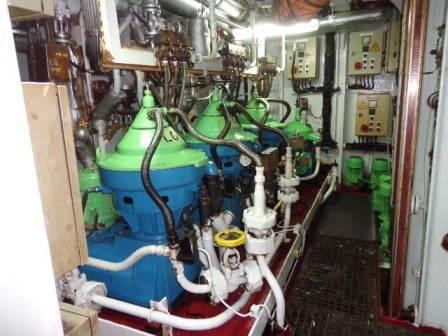Navigation rules are guide lines which are provided following previous experience and incidents.
It’s very important that all navigator note down these navigation rules. Not only to note them down, also learn to make use of them. Some months back, I was taking interview with a young navigator,who is already holding 2nd class COC at hand. At of ten questions given to him regarding rules of navigation, he was able to answer on three. That shows a very poor performance, and incompetent. Therefore this article is going to list some navigation questions like and answers which you should know.

30 list of navigation rules for both international and inland waters.
Below are important rules for both international and costal water navigational rules which you may come across during your career.
1. A power-driven vessel, when towing astern, shall show a towing light in a vertical line above the stern light
2. When taking action to avoid collision, you should make sure the action is taken in enough time
3. You maybe ask,if two sailing vessels are running free with the wind on the same side, which one must keep clear of the other? Answer is ; The one to windward
4. While underway in a narrow channel, a vessel should maintain to the starboard side of the channel
5. Lets say you are sailing in Inland water , what may be used to indicate the presence of a partly submerged object being towed? If you are asked such question, just simply answer ; the beam of a search light from the towing vessel shown in the direction of the tow. Always remember that.
6. Likewise if you are sailing on the international waters, To indicate that a vessel is constrained by her draft, a vessel may display, in a vertical line,three 360° red lights
7. Know that yellow lights are NOT used to identify a seaplane on the water.
8. You may come across this question, if a towing vessel of 35 meters in length, with a tow 100 meters astern, are underway, she must show a minimum of how many masthead lights? Answer; just two.
9. Also note according to the Navigation Rules, you may depart from the Rules when you are in immediate danger.
10. At night you sight a vessel displaying a single green light. What does that indicates? Simply know that she is a sailing vessel
11. In a case where a 200-meter vessel is aground in restricted visibility. A whistle signal is optional . Take note.This question mostly comes out in exams.
12. The rules says, a sailing vessel underway may exhibit a red light over a green light at the masthead.
13. If you are asked; when should the fog signal of a manned vessel under tow be sounded? Then your answer should be ; Right after the towing vessel’s fog signal
14. The rules says that a vessel being towed astern shall show at night sidelights and a stern light. Take note.
15. Also take note that a sailing vessel underway at night may show only forward navigation light.
16. Take note that a pilot vessel may continue to sound an identity signal if she is underway, but not making way. This helps the other vessels to understand her condition and give way.
17. Get to know that a single towing light will be carried above a vessel’s stern light only if she is towing astern.
18. Navigation Rules Exam Question : “What characteristic must a light used to indicate passing intentions have?” Note that, It must be either an all-round white or an all-round yellow light.
19. In a dense fog, you hear a whistle signal of one prolonged blast followed by three short blasts. This signal is sounded by a manned vessel being towed.
20. You may come across this question,what lights are required for a single barge being towed alongside? The answers are; sidelights and a stern light.
21. Lets say you are asked, which vessel is categorised to be “underway” under the Rules of the Road? Simply note that a vessel drifting with the engine off is also categorised to be underway.
22. A point to have on your mind; at night, a barge moored in a slip used primarily for mooring purposes shall not be required to be lighted.
23. If you are asked, “what light(s), if any, would you show at night if your vessel was broken down and being towed astern by another vessel?” The answer is simply the colored sidelights and a white stern light.
24. Very important one,while your ship is underway in fog, you hear a vessel ahead sound two prolonged blasts on the whistle. You should sound only fog signals until the other vessel is sighted.
25. What does the term “prolonged blast” means? Note that the term prolonged blast means a blast of four to six seconds duration.
26. If you are asked, what is the optional whistle signal which may be sounded by a vessel at anchor? Its simply one short blast, one prolonged, followed by one short blast.
27. A tug is towing three manned barges in line in fog. Which vessel need to sound fog signal? The second vessel of the tow should sound no fog signal. It’s part of the rules.
28. A light used to signal passing intentions must be an all-round white light only. Note that.
29. Navigation Rules Exam questions; ” A vessel of less than what length may not impede the passage of other vessels which can safely navigate only within a narrow channel or fairway?” Answer; A vessel of 20 meters
30. Note that only law enforcement vessels are permitted to show a flashing blue light.
Conclusion
Following the list above navigation rules, I strongly believe that by now, you are some how prepared, if you come across any of the above rules or questions about the rules.
If you learn something from this post, don’t forget to share to reach your friends who may need this information. Subscribe below, for our weekly article updates. We wish you a safe career at sea.










2 thoughts on “Navigation Rules You Need To Know”
Pingback: Fishing Vessel Crash Into Break Wall - Marine And Offshore Insight
Pingback: General Procedure For Ship Departure And Arrival To Port - Marine And Offshore Insight